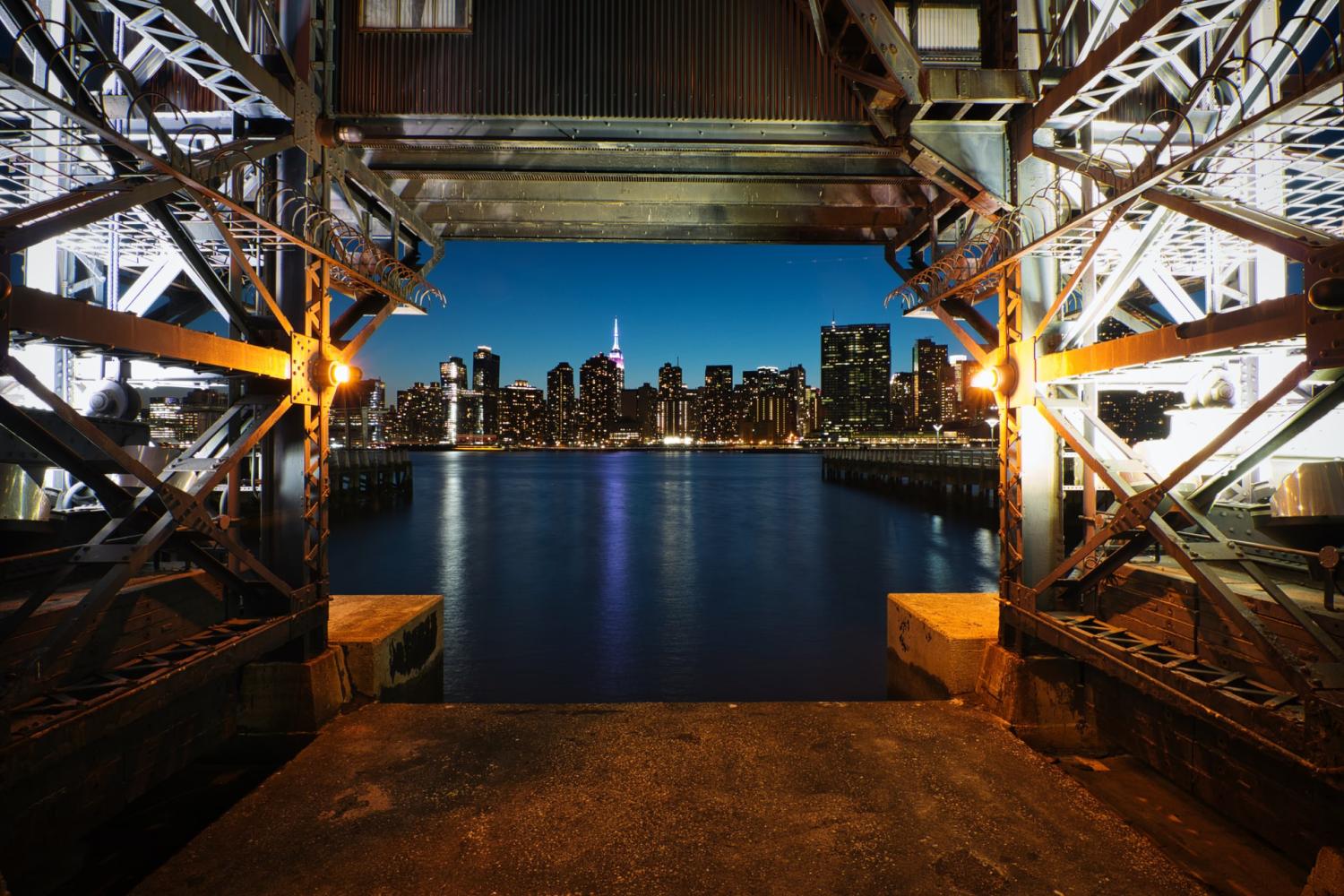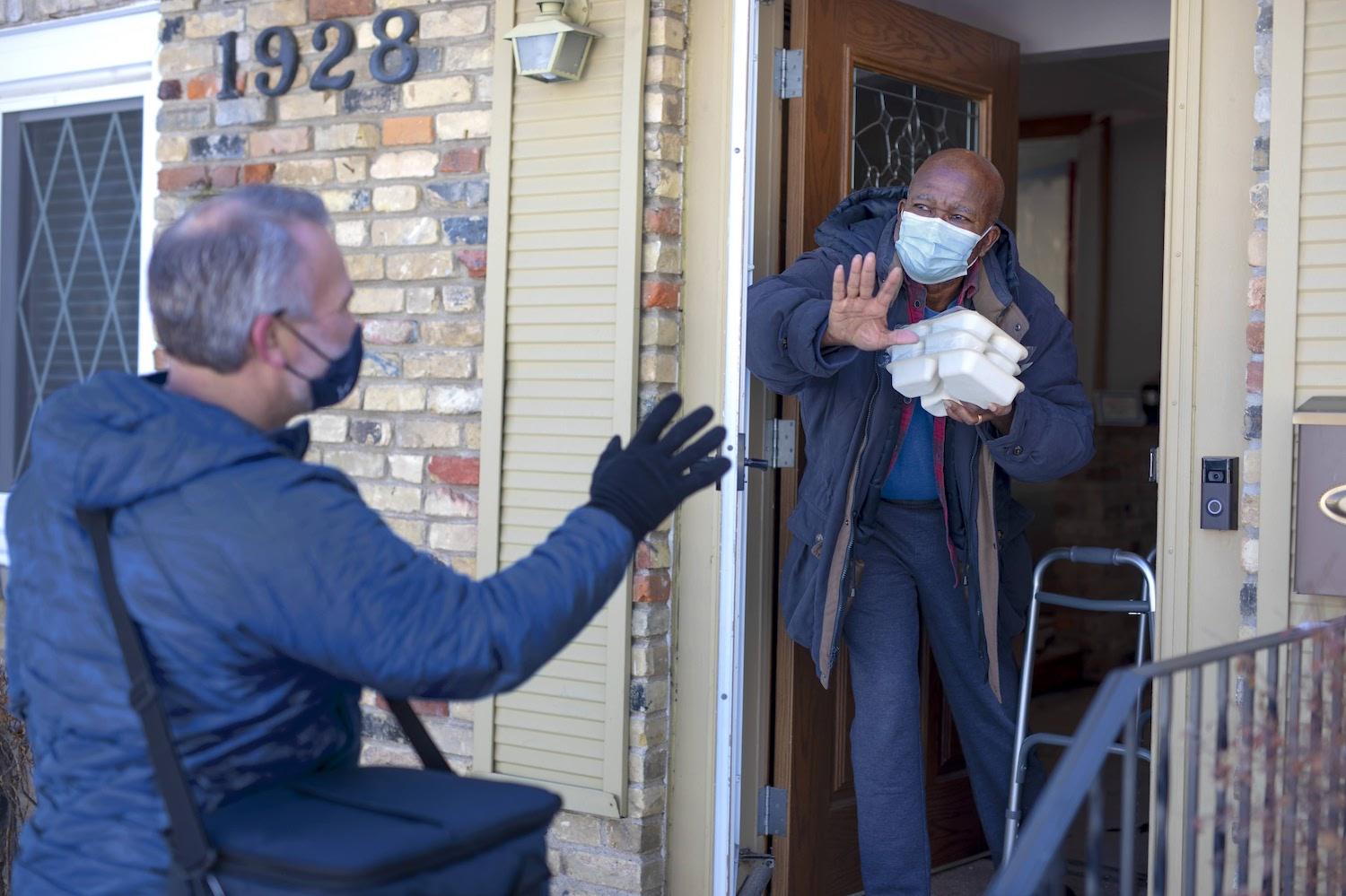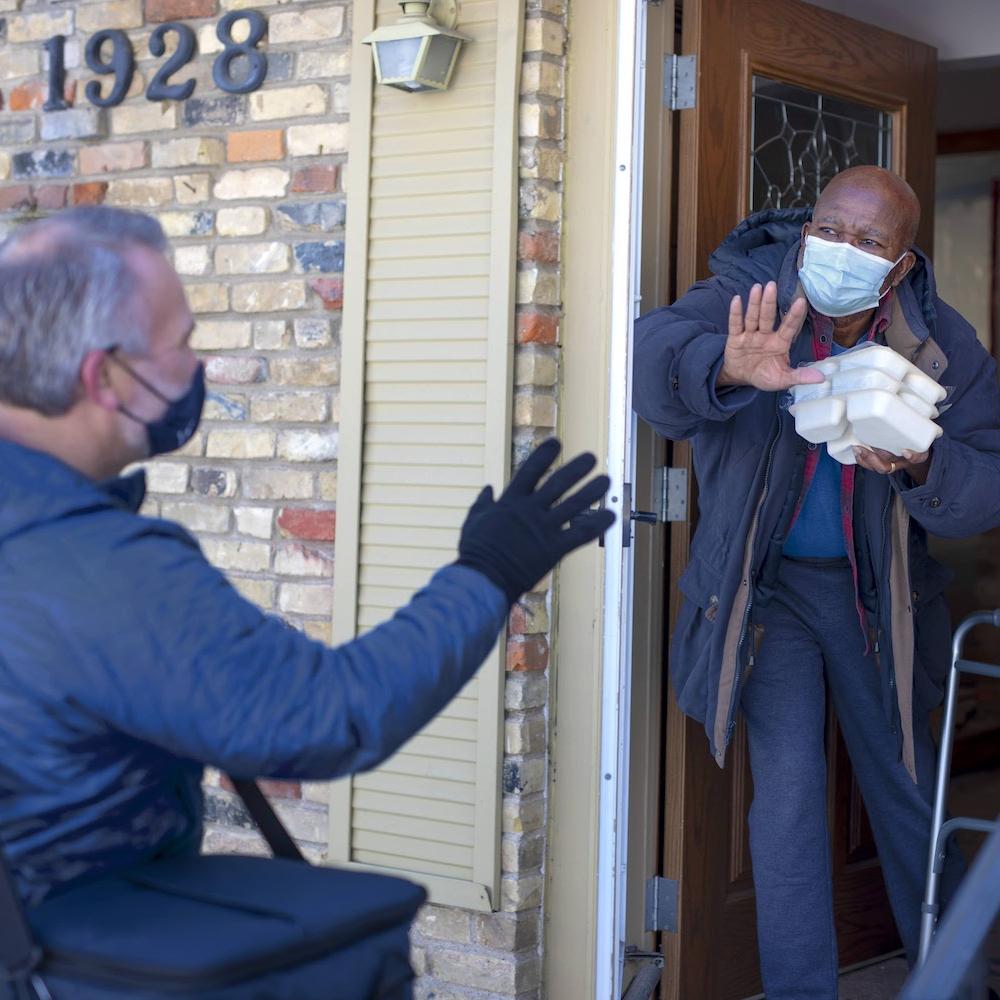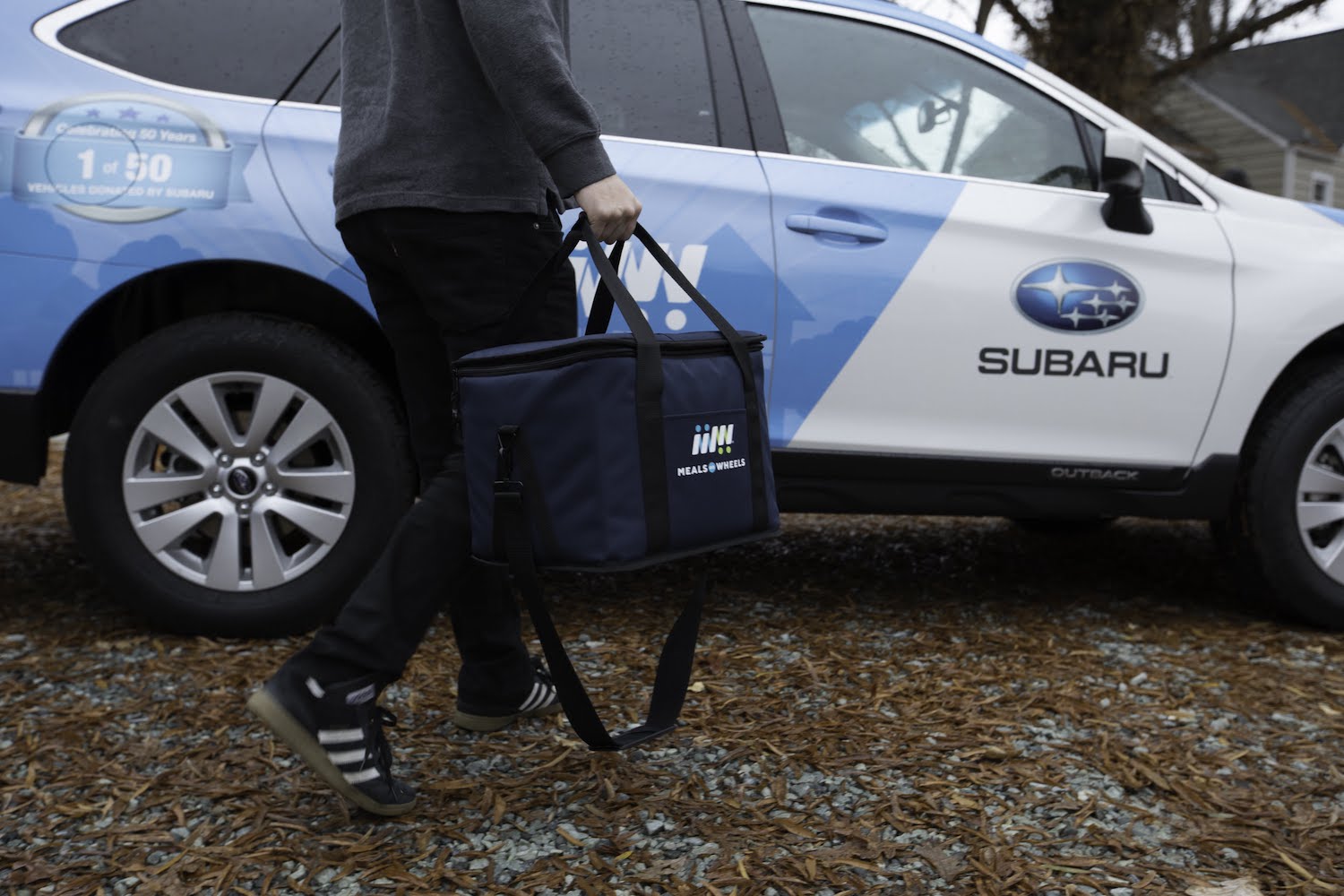The Top Five Products Made from Recycled Carbon


Air Eau de Parfum, the world’s first fragrance made from air, made by Air Company
Carbon capture is not quite the planet-saving miracle touted by its advocates, many of whom have a stake in extractive fossil energy industries. However, captured and recycled carbon is making its way into some surprising new consumer products that reduce the need to mine and extract from the earth for coal, oil and natural gas. Brands can carve new pathways for expanding their sustainability profile by making choices that can help accelerate this trend.
What is wrong with recycled carbon?
The problem with the conventional approach to carbon capture is that it simply amounts to a global exercise in wheel-spinning that enables the pace of fossil energy extraction and usage to continue unabated.
Somewhat ironically, the primary use of captured carbon today is in oil fields, where it is used to enhance output from underproducing oil wells.
Fortunately, alternative uses are beginning to appear on the market. These alternatives could help accelerate global decarbonization, as long as they are not offset by business as usual in the fossil energy field.
Recycled carbon for the fashion industry
The carbon capture field scored a high fashion makeover in December, when the global retailer Inditex released a capsule collection of recycled carbon party dresses for its Zara stores.
The sleek, stylish line was made possible through a partnership with the firm LanzaTech, which has invented a bio-based carbon recycling method that deploys engineered microorganisms to digest airborne carbon from steel mill waste gas and other sources. The process yields Lanzanol, a proprietary brand of ethanol.
The rest was simple. Lanzanol underwent a basic petrochemical conversion into monotehylene glycol, which is the raw material for polyester yarn.
Recycled carbon for vodka
Perhaps the most inventive use of airborne carbon today comes from a company called Air Company, which takes an almost philosophical approach to the recycled carbon field, based on the premise that carbon is carbon, no matter what form it takes.
As it happens, carbon plays a big part in the human form. By mass, carbon is the second-most prevalent element making up the human body by mass, clocking in at 18.5 percent. Only oxygen outdoes carbon, at 65 percent. Hydrogen is the most abundant element in the universe, but it runs a distant third, with 9.5 percent. About a dozen elements consisting mainly of nitrogen and metals make up the rest.
Air Company sources its carbon from a variety of areas.
“The carbon dioxide (CO2) used in our process is captured from traditional fermentation and industrial alcohol plants prior to it being emitted into the atmosphere. The CO2 arrives to us in tanks after it has been cooled, pressurized and liquified,” Air Company explains.
So far, Air Company lists vodka, air spray, sugar and perfume on its recycled carbon list. Others are sure to follow.
The artificial leaf: making all sorts of new plastics from recycled carbon
The appearance of sugar in Air Company’s product line may be surprising, but it is no surprise to many scientists. Researchers know how to create “artificial leaf” systems that replicate photosynthesis, the process by which plants deploy sunlight and water to convert carbon dioxide from the air into sugars.
They also know how to convert captured carbon dioxide into carbon monoxide, which is a building block for fuels and other industrial products.
To date, the artificial leaf process relies on recycled carbon that has already been captured and isolated. The next challenge is to capture carbon directly from the air, just like a plant.
Last year, researchers from the U.S. Department of Energy’s Argonne National Laboratory received a three-year, $4.5 million grant to demonstrate a new artificial leaf that could produce a variety of valuable chemicals for fuels and for plastics, resins and glues.
Recycled, and recyclable, carbon for vegan leather
One leading challenge in the recycling field is to come up with end products that can meet performance standards. That is especially tricky in the area of food packaging.
The company NewLight recently leaped that boundary, by achieving approval from the U.S. Food and Drug Administration (FDA) for its carbon-negative “AirCarbon” plastic.
To make AirCarbon, NewLight mimics ocean dwelling microorganisms that consume methane and carbon dioxide. The organisms produce a biomaterial called PHB, which can be melted and formed to make alternatives to leather, as well as fibers and plastics.
The company’s Covalent fashion brand is currently focused on replacing leather for carbon-negative bags, wallets and cases as well as plastic for eyewear, and its Restore brand is producing carbon-negative straws and cutlery.
Jet fuel from the air
Decarbonizing the airline industry is a major challenge. Batteries and fuel cells can (and most likely, will) power small aircraft over relatively short distances in the near future, but so far biofuel is the only option within reach for larger aircraft that travel long distances.
However, another option is also emerging. The California company Twelve is on track to compete with jet biofuel stakeholders. Twelve has developed an electrolyzer system for carbon capture, similar to the electrolyzers used for extracting “green” hydrogen from water. By adding carbon dioxide from the air to the process, Twelve deploys both green hydrogen and carbon to make jet fuel and other products, as well.
Twelve’s proprietary E-Jet fuel was certified for use by the U.S. Air Force last summer. The company has also partnered with Pangaia to produce sunglasses from captured carbon, and it is working with Tide and Mercedes-Benz on detergents and car parts made with captured carbon.
Moving past fossil energy
The common denominator among all five innovators is using captured carbon to make wide variety of products, reducing the need to continue extracting virgin carbon from underground.
So far these markets are vanishingly small, but they can contribute to larger trends, including bioplastics and plastic recycling, that help reduce dependence on conventional petrochemicals.
Signs of accelerated activity are already occurring. For example, Microsoft recently gave the field a kickstart by establishing a $1 billion next-generation carbon recycling fund. Other brands seeking to hop on board the trend will need to act fast if they want to establish their position in the vanguard.
Image credit via Air Company
2022 and EVs: Trends to Watch Out For


As 2021 draws to a close, we thought we’d take a look at the state of play in the electric vehicle (EV) market and offer our thoughts as to where we see things headed for EVs in 2022 and beyond.
Continuing global supply chain issues, semiconductor shortages and the ongoing global pandemic notwithstanding - let us begin.
We start with perhaps the oldest talking point possible when it comes to EVs - but it’s still a thing:
Range!
Yes, when it comes to EVs, range remains top of mind, even as improvements in battery technology means range-anxiety continues to diminish. But the range that buyers think is acceptable continues to be a moving target as both technology and battery costs improve. So, what bar should car makers aim to clear?
Looking ahead to next year, we expect around 250 miles between charges will be the sweet spot many buyers will settle upon.
Eight out of 12 of the top selling EVs in the U.S. through the end of October this year, came in versions capable of at least that range. Yet some on the list, even from certain premium brands, only just crept over the 200-mile mark. Going forward, a sub-250-mile range will become a tough sell. And really, any new models in development, especially from premium brands, should include versions capable of at least 300 miles.
Tesla still sets the range standard as far as established brands go; the long-range Model S tops 400 miles. But while Tesla will no doubt continue to up its range game, a new entrant, Lucid Motors, already boasts an official EPA range of 520 miles with the most upscale versions of its Air, a luxury sedan. This is six-figure price territory, though.
Range is king, but not the whole story of EVs
Fast charging is something upon which automakers will increasingly compete.
While range is still king, car companies will increasingly compete on shortening charging times because doing so increases usability; the faster you can top-up your EV on a long road trip the better.
Generally, people are aware that EVs will charge quicker from a commercial fast charger than a standard wall socket. But it’s less well known that even if you plug into the fastest charging stations available, the speed at which a vehicle can be charged is also dependent on the vehicle’s ability to accept that charge.
Today’s fastest chargers operate at 800 volts, capable of delivering a charge of up to 350 kW. In practical terms, this is the EV equivalent of drinking from a fire hose! Though some come close, today’s EVs can’t accept that charge rate.
Instead, software engineers at car companies throttle the rate of charging to balance speed with battery stability. Modulating the rate is important both during individual charging cycles, and also over the life of the vehicle, to limit battery degradation. How well engineers can solve this technical conundrum is key to charging performance. But statistics on how fast a car will charge is something car makers are increasingly keen to tell people about.
Consider Hyundai’s new Ioniq 5 electric SUV. The South Korean automaker claims that when plugged into a 350-kW fast charger, the Ioniq 5 battery will charge from a 10 percent capacity to 80 percent in just 18 minutes: about the time to enjoy a cup of coffee. Or, if you’re in a real hurry, Hyundai claims it takes just 5 minutes to add 62.5 miles (100 km) of additional range. Buyers will start to pay attention to these capabilities.
The future is electric vehicle platforms, not individual stand-alone vehicles
A brief evolution of EVs since around 2010 goes something like this: At the outset, legacy automakers generally offered one token EV in their range; usually, it was an awkward adaptation of an existing internal combustion engine model, with very limited production.
Sometimes, as with the Nissan Leaf, an EV would be created from the ground up, i.e. a stand-alone dedicated EV. But still, it is a solitary offering.
Now, and an imperative for the future, makers are increasingly developing dedicated EV platforms upon which they can build a whole range of EVs. Platforms allow scalability through modular design, leading to cost effectiveness and speed to market.
And as customers increasingly want choices, it will be scalable platforms which will deliver them. Among the examples:
General Motors has staked its EV future on the Ultium platform, with plans to build a range of vehicles across its brands around proprietary flat-pack battery packs. These can easily be reconfigured for smaller or larger vehicles, while leveraging a common technology. The first of GM’s Ultium products, the Hummer EV, just hit the market and 2022 will provide insight as to how well the company has executed on its strategy.
Similarly, Volkswagen has staked its I.D. family of EVs on its own “modular electric drive matrix” (MEB) platform which the company says will underpin a variety of classes of vehicles. VW is doing well with the ID 4 already on sale in the U.S. market.
Meanwhile, Hyundai says the company will produce 23 global electric vehicles by 2025 on its E-GMP platform; this is the platform upon which the aforementioned Ioniq 5 is built.
As more and more car companies pledged during 2021 to be all-electric by the end of the decade, building a platform-based family of vehicles appears to be the emerging strategy to realize that goal. And this will not just apply to cars, because:
Electric trucks are coming
Though there has been a steady increase in the choice of electric passenger vehicles over the last decade, 2022 will be the year when truck buyers can finally get in on the action.
The Ford F-150, which is America’s best-selling vehicle outright - let alone pickup - will come as an all-electric option in 2022. The F-150 Lightning is slated for launch in the spring and it can’t be overstated how important this vehicle is given the iconic nature of the F-150 nameplate.
Also, 2022 will see customer deliveries of the much anticipated Rivian pickup and SUV, while of course the Cybertruck from Tesla should finally go on sale later in 2022, two-plus years after it made its dramatic appearance.
Look out too, for the Silverado EV pickup from GM that is to be revealed at CES 2022, on January 5. This will be another GM vehicle built on the Ultium platform and will position the company to continue its rivalry with Ford’s pickup range - EV style.
The introduction of electric trucks will open up a new and hugely significant market segment, which dovetails nicely with a positive signal from the federal government. Help is on its way for needed infrastructure.
Infrastructure bill to boost EV charging
While it's looking as if the Build Back Better bill may not cross the finish line, the bipartisan infrastructure bill which has been signed, at least includes $5 billion investment for state-administered grants for charging stations nationwide.
Though funds won’t flow overnight, work can gather pace in 2022 towards allocating this infrastructure spending. Importantly, funds will be directed towards building EV charging stations in communities that include rural, disadvantaged and hard to reach areas as reported by Forbes.
Hopefully this development will help begin to nudge EV adoption towards a broader base of consumers, and not confine ownership solely to people of above average means.
Image credit via Lucid Motors
The Not-So-Hidden Brand Reputation Manual Behind 'Don’t Look Up'


The new Netflix movie Don’t Look Up is getting all sorts of reviews, many of which center around the film’s not-so-hidden messaging on climate action. Don’t Look Up also serves a much broader purpose, as a primer on communicating in the age of media clutter. In that regard it should make the “suggested viewing” list for corporate training on brand reputation and social responsibility.
Don’t Look Up is more than a climate crisis message
Don’t Look Up begins with a scientist literally doing the opposite. She looks up into the cosmos through a powerful telescope and discovers a new comet, which is big enough to destroy the Earth. On further examination it is barreling straight towards Earth, no doubt about it.
Given that the title of the movie is Don’t Look Up, but the protagonist does the opposite, that opening sequence preps the audience for a primer on how to communicate what you see with your own eyes, when your society is overwhelmed by non-factual information.
Many reviewers have made the connection between Don’t Look Up and climate action, but that misses the point. In terms of communication, the film’s central message is about the social spread of non-facts, a problem that applies equally to the COVID-19 pandemic and the “Big Lie” about voter fraud in 2020 presidential election.
Life imitates art in Don’t Look Up
The A-list cast of Don’t Look Up includes Jennifer Lawrence, Leonardo DiCaprio, Tyler Perry, Meryl Streep, Mark Rylance and Timothée Chalamet. They carry the film along at a good clip, but many critics have complained that the overall messaging is too heavy-handed.
Isherwell, played by Rylance, represents the Tech Hero Money Genius, an agglomeration of characteristics that encompasses Elon Musk, Mark Zuckerberg, Jeff Bezos and Bill Gates. Like the “manic pixie dream girl” character, a Tech Hero Money Genius has no inner life. Instead, they exist to fulfill the needs of others. In return they receive an almost unimaginable degree of power, and the money to go with it.
Meanwhile, DiCaprio's role dovetails with his real life, in which he is a high-profile climate activist. DiCaprio has leveraged his star power to draw attention to the climate crisis in various ways, from speaking before the United Nations to participating in protest marches and sponsoring a racing team in the Formula E electric vehicle racing circuit.
In recent years, DiCaprio has also invested in various areas with a focus on sustainable foods as well as manufactured diamonds. He is also a backer of the fossil-free financial services firm Aspiration along with investors such as Orlando Bloom and Robert Downey, Jr. Aspiration has seen its growth skyrocket since its launch in 2015.
The message on this point is subtle but sharp. Corporate leadership could make a difference, but only if it is not misdirected by ego and self-interest.
A communication lesson for corporate leaders
Negative reviews aside, Don’t Look Up assembles a deft, entertaining list of characters who illustrate many of the obstacles in the way of fact-based communications.
On the science side, the film shows how the researchers with their hands directly on the data can be hampered by youth, inexperience, personal anxieties and a singular focus on detail at the expense of clarity.
Nevertheless, all of these obstacles can be overcome if people on the other side are paying attention. As expressed by Don’t Look Up, the most critical failure is on the part of the voting public.
The film portrays a public obsessed with interpersonal communication through Isherwell’s fictional “BASH” network, to the extent that citizens fail to grasp the role that basic competency plays in sustaining a modern democracy.
The result is catastrophe. The film does highlight the role of a jaded, complacent media, but that is a side note to the main thread. The centerpiece of the film is Meryl Streep’s over-the-top portrayal of an abysmally incompetent, self-centered U.S. president who assigns equally incompetent, self-absorbed people to head up critical tasks and agencies, such as placing an anesthesiologist at the head of NASA. In contrast, the staff that engineers the president’s lavishly staged public statements is evidently at the top of its game.
Brand reputation and voter education
The election of incompetent leaders is nothing new in a democracy. In the U.S., the debacle of the one-term Trump presidency is the culmination of generations-long messaging about voter education that revolves around who to have a beer with, instead of who has the experience and temperament to administer powerful offices in a diversified industrial economy.
Many corporate leaders have begun to build their brand reputation on get-out-the-vote efforts. That is all well and good, but the damage has already been done. Local, state and federal offices are already saturated with elected officials who obstruct climate action, violate basic COVID-19 prevention guidelines and promote lies about voter fraud — and that’s on top of the ones who support armed insurrection and promote religion over science in the area of women’s reproductive health.
It’s going to be a tough row to hoe, but corporate leaders who are really serious about cutting through the communications clutter need to focus like a laser on voter education.
How to cut through the media clutter
One good place to start would be to take a page from the U.S. Centers for Disease Control (CDC).
In 2016, CDC issued a report on the "Tips from Former Smokers” media campaign. “Tips” was launched in 2012 as the first anti-tobacco media campaign to be funded by the federal government. According to CDC, it was an overwhelming success. By 2016 the campaign was credited with helping 400,000 smokers to quit permanently. The number has swelled to approximately 1 million since then.
CCD relaunched the campaign last March. It provides clear guidance on effective messaging across any number of issues.
“Research shows that emotionally evocative, evidence-based campaigns, like Tips, are effective in raising awareness about the dangers of smoking and helping people who smoke to quit,” CDC explains. “These campaigns are even more effective when coupled with quit lines, which provide free, confidential support services to help people quit smoking.”
As applied to voter education, the lesson for corporate leaders is clear. Like it or not, an effective voter education effort needs to be bipartisan.
Corporate leaders who are truly serious about climate action, COVID-19 prevention and voter suppression need to send powerful, emotional messages about harm and potential harm, and those messages need to provide voters with specific action steps that prevent harm — namely, voting for candidates who are capable of preserving foundational values in a modern democracy.
Image credit: Matese Fields via Unsplash
Why Are Half of All U.S. Service Sector Workers Still Unvaccinated for COVID-19?


Despite extensive in-person contact with customers, only half of U.S. employees working in the service industry were vaccinated for COVID-19 as of June 2021. Numerous factors have contributed to these low vaccination rates, including the lack of any paid time off for getting the shot or vaccine side effects, transportation to clinics and concern over the side effects of the vaccines.
The Shift Project set out to determine what barriers prevented service sector workers from getting vaccinated and interviewed nearly 9,000 employees from large firms from March through May 2021.
Lack of paid time off
Many service sector employees do not receive paid time off or any form of sick leave. Thus, employees without this benefit could experience financial hardship if they needed to take time off due to side effects from the vaccine. In fact, 50 percent of service workers who participated in the Shift Project’s research said they were unable to make the appointment. And, many have physically demanding jobs that are difficult to complete when feeling ill.
Of all the respondents, 54 percent said they had paid sick leave, and vaccination rates were 15 percent higher in this subset.
Employers offering support have employees with higher COVID-19 vaccination rates
Many employers offered incentives or support to workers to remove barriers to getting inoculated. For example, Trader Joe’s, Krogers, and American Airlines are among companies that offered small bonuses to employees. Other corporations, including Aldi, Olive Garden and McDonald’s offered paid time off for getting the vaccine. Target even gave employees free rides to vaccination clinics.
However, such incentives were far from universal, and many employers offered none at all. Of the respondents to the survey, only 41 percent said their employers offered an incentive or support. For companies that offered the vaccine, 68 percent of employees were vaccinated compared to 39 percent with no employer support.
It’s clear that smaller gestures, such as a bonus or a few hours off, can motivate employees to take the time they need to get inoculated. “Corporate action – or lack thereof – can make a significant difference, especially as it relates to issues of race and COVID-19 vaccine access,” TriplePundit’s Tina Casey said earlier this year.
Vaccination rates vary by age and race
The Shift Project survey examined several factors, including race and age. Not surprisingly, vaccination rates were nearly twice as high in employees over 70 compared to respondents ages 18 to 19. These findings follow a national trend where seniors are more concerned about the health impacts of the virus and are considered to be at a higher risk of severe infection.
Likewise, the study found that vaccination rates vary by race. Asian Americans and Pacific Islanders were the most likely to be vaccinated, at over 60 percent, followed by Whites at 47 percent, Hispanics at 46 percent, Blacks at 42 percent and Indigenous citizens below 30 percent.
The exact concerns vary by race, ethnicity and even location. For example, undocumented workers might be concerned about deportation, and ID requirements could have a disproportionate impact across various demographics. Some Black citizens might distrust the medical community due to past injustices and deceitful practices in the medical field - among them the The Tuskegee Study.
Businesses still face risks from the pandemic
For many companies, it’s in their best interests for employees to get vaccinated because it could reduce absenteeism; to that end, some corporations are starting to require them. Cognizant of tight labor market, more companies with a wide range of sectors are implementing such mandates, such as Microsoft and Tyson. In addition, some companies, such as McDonald’s and Walmart, will require inoculation for office workers but not frontline employees.
Such policies are counterintuitive when considering that many service industry workers come in regular contact with the public, as well as workers employed at restaurants and bars. “Employees are most likely to accept vaccination mandates when there is strong evidence that they will protect the most vulnerable or have other clear business or public health benefits,” concluded the Harvard Business Review earlier this year.
Finally, employers must remember that they are responsible for ensuring worker safety. The science is out there, as Casey reminded us earlier this month. “Almost two years into the pandemic, the physical risk of COVID-19 transmission in retail stores and other indoor spaces is well understood,” she wrote.
But it’s not only companies that should step up to protect all workers. “Along with voluntary employer action, universal federal policies – such as paid time off to encourage vaccinations – have the potential to protect some of the country’s most vulnerable workers and the public’s health,” concluded the Shift Project’s researchers.
Co-written with Leon Kaye
Image credit: Melanie Lim via Unsplash
We’re Closing In on 2022: Holiday Greetings from the Writers and Editors at TriplePundit!


We’d be remiss if we didn’t thank our readers for your support during 2021. The editors and writers here at TriplePundit deeply appreciate your loyalty and we look forward to what hopefully will be a far less chaotic 2022 (but we’re prepared if that isn’t the case!).
We’re powering down our laptops tomorrow, Friday December 24. We’ll also be slowing down our publishing schedule for the rest of the year but looking forward to continuing our coverage starting on January 3.
All of us here at 3p and 3BL Media wish you the happiest holiday season. Stay safe, stay healthy, and one more thing: Happy New Year, too!
In case you missed it, we’ve got a list of the stories during 2021 that meant the most to our fine group of writers.
After the IPCC Report: Why Communications Absolutely Matter
“The comms around climate change was so hyperbolic this year, but it's worth remembering that the way we communicate affects how and whether people, governments, and companies take action.” – 3p’s Kate Zerrenner.
Ownership Over the Female Body No More: How Women Athletes Are Taking a Stand
This August story discusses several important topics currently in the headlines: Women's autonomy over their own bodies, mental health awareness, and justice for the abuse survivors in USA Gymnastics, says Megan Amrich.
Reconnecting America’s Racialized Roads? Infrastructure Bill Doesn’t Pack Enough Punch, But It’s a Start.
As the Biden administration's trillion-dollar infrastructure bill welcomes levels of spending on highways not seen since the Eisenhower-era Federal-Aid Highway Act, cities are clamoring to not only repair their crumbling roads, but also right the wrongs the paving left behind – read more from Grant Whittington.
A Job Is Not Enough: How To (Really) Support Our Troops
Week after week, long-time senior writer Tina Casey brings a valuable perspective to 3p, as in “I hadn’t thought about it that way.” In this story, Tina talks about why companies need to do more than hire veterans: It’s also important to ensure they can succeed in the private sector as they acclimate to civilian life.
As the Battle Over U.S. Immigration Reform Heats Up, Business Stays Largely Silent
With real immigration reform on the table for the first time in decades, the fight heated up from the halls of Congress to the streets of the largest U.S. cities. The business community, however, had stayed largely silent. And why was that? More from 3p’s senior editor Mary Mazzoni.
Ew, David! Schitt’s Creek Offers Companies A Cautionary Tale on Diversity
Addressing diversity in an honest way was among the final lessons that the popular comedy Schitt’s Creek offers us. As the show continued to generate more buzz and awards — even after it was long known it had filmed its final season — criticism also mounted, and the show’s creator responded and took on that feedback head-on.
After the Texas Winter Storm, a Clarion Call for Investing in Energy Efficiency
As Kate Zerrenner writes, what happened in Texas last winter was so intensely personal. And so deeply frustrating that in the end, the crisis was avoidable.
Bronx Highway May Get Capped: Here’s Why It Matters
In many places around the U.S., highways that thrashed through cities, particularly in communities of color, are being transformed into parks and boulevards that reconnect communities, spur investment and depollute the air. Grant Whittington shines light on what is going on in the South Bronx.
‘Isn’t It Bad to Cut Down Trees?’ and Other Burning Questions About Sustainable Forestry
From Roya Sabri: To so many, sustainable forestry means keeping forests untouched. Brad Kahn with the Forest Stewardship Council clarifies why that's not always the best approach: Since most forests in the U.S. are privately owned, those owners need to be gaining value from their land. Otherwise, he says, they may not "have an incentive to keep those forests as forests."
Image credit: Aaron Burden via Unsplash
Despite Joe Manchin, West Virginia is Poised to Move Beyond Coal — Eventually


Wheeling, West Virginia
Coal still holds a tight grip on the economy of West Virginia, as reflected in the personal business interests of U.S. Senator Joe Manchin, and Governor Jim Justice, too. Nevertheless, policy makers are beginning to nudge the state in a more diverse economic direction. In addition, the still-powerful United Mine Workers of America is beginning to show signs that it is adapting to the green energy economy of the future.
Coal and the West Virginia economy
The coal economy has defined West Virginia throughout modern history, with mixed economic results. On a statewide basis, coal has been West Virginia’s leading export for generations. On a local basis, though, studies have shown that higher levels of poverty, poor health, and economic malaise bedevil communities that depend on coal jobs throughout West Virginia and the Appalachian region.
Senator Manchin’s opposition to the Build Back Better climate action bill has further underscored West Virginia’s dependence on the coal industry, even as the global economy transitions out of coal. In effect, he has pulled the rug out from under the state’s Department of Economic Development, which is seeking to attract new businesses to West Virginia by promoting the growing diversity of its economy.
To assist in that effort, the agency has established a business recruitment website that highlights “thriving industries."
“West Virginia’s diverse economy has moved beyond our history of resource extraction to include a robust array of products and services,” the agency explains. They list aerospace, food and agriculture, automotive, building products, defense, metals, manufacturing, information technology, fulfillment warehouses and industries related to lumber and wood products as leading opportunities for businesses seeking a foothold in West Virginia.
Moving beyond coal — or not
The agency also includes “energy production” among the diverse opportunities, and that’s where things get complicated.
On a web page detailing what they mean by “energy production,” the agency notes that West Virginia is still among the biggest producers of fossil energy in the U.S., coming in at second for coal and seventh for natural gas. That is a fact, but it undercuts the messaging for most of the other business areas they seek to attract.
For example, the information technology industry has been shifting toward renewable energy for years. Even the hard-to-decarbonize manufacturing sector is seeking more renewable energy, with General Motors being a leading example.
As global industries accelerate their decarbonization plans, the emphasis on fossil energy production also undercuts West Virginia’s messaging about diversity in its exports.
A recent article by the state’s Department of Commerce suggests that West Virginia is attempting to position itself globally as something more than a coal and gas producing state.
“Plastics, chemicals, automotive, metals, aerospace, and hardwoods combined for more than $3 billion in exports from West Virginia” the Commerce Department wrote. “Notably, products and parts for the aerospace industry reported export growth at 17.8 percent over the previous year.”
The article also cited Governor Justice, who also emphasized diversity.
“To see our exports growing at almost double the national rate is truly incredible,” he said. “Not only is it great news for our manufacturers who have made a home here in West Virginia and have seen their businesses grow because of it, but it is also wonderful to know that West Virginia’s products are making an impact all over the world and that everyone gets to see just how good we really are.”
If Governor Justice means good at using coal, that’s not going to be a selling point for global industry stakeholders who are looking to clean up their supply chains. As of 2020 coal power plants still accounted for almost 90 percent of electricity generation in West Virginia, leaving little wiggle room to attract new businesses in search of a clean power profile.
More green jobs for West Virginia, if Senator Manchin allows it
Signs of real change in West Virginia’s energy profile are slim, but they are happening. The “Thriving Industries” web page, for example, notes that a 2019 shift in state law will enable large scale solar development in West Virginia for the first time. That includes the potential for locating solar arrays on abandoned coal sites, possibly with an assist from foundations like Michael Bloomberg’s Just Transition Fund.
For real change to come about, though, a change in state leadership may be necessary, and that will require a massive shift in voter sentiment.
One sign of change came about last April, when the iconic United Mine Workers of America labor union expressed support for the Build Back Better bill.
To be clear, UMWA advocated for the creation of new green jobs for unemployed coal workers and their communities, but not necessarily at the expense of existing fossil energy jobs. For example, the union voiced support for new job opportunities in the fields of carbon capture and fossil-sourced hydrogen, though these two areas are not the clean energy solutions endorsed by most climate advocates.
The union shifted its tone dramatically earlier this week, after Senator Manchin appeared on a national television show to announce that he will not cast the deciding vote to pass Build Back Better in the Senate.
Manchin’s announcement provoked a firestorm of criticism, not the least from UMWA.
In a public statement dated December 20, UMWA International President Cecil E. Roberts noted that the energy marketplace is changing, and he detailed how Build Back Better supports the union’s previously published Principles for Energy Transition.
Specifically, Roberts noted that Build Back Better includes provisions that support economic diversification in West Virginia, such as re-purposing coal sites for manufacturing and other uses.
Roberts began the statement with a polite nod towards Manchin’s effort in the areas of pension and health care, but that was just the buildup for the real points he wanted to make.
Noting that Build Back Better would provide penalties for employers that deny the right to unionize, Roberts said, “This language is critical to any long-term ability to restore the right to organize in America in the face of ramped-up union-busting by employers…now there is no path forward for millions of workers to exercise their rights at work.”
“For those and other reasons, we are disappointed that the bill will not pass,” Robert continued. We urge Senator Manchin to revisit his opposition to this legislation and work with his colleagues to pass something that will help keep coal miners working, and have a meaningful impact on our members, their families, and their communities.”
Roberts was not done yet. He went on to issue a sharp warning on voting rights.
“I also want to reiterate our support for the passage of voting rights legislation as soon as possible, and strongly encourage Senator Manchin and every other Senator to be prepared to do whatever it takes to accomplish that. Anti-democracy legislators and their allies are working every day to roll back the right to vote in America,” he said.
“Failure by the Senate to stand up to that is unacceptable and a dereliction of their duty to the Constitution,” Roberts concluded.
It remains to be seen if Roberts’s sentiments are reflected in the next statewide elections. However, if Manchin ever enjoyed a reputation as a friend of the ordinary citizen, he shredded it by failing to endorse Build Back Better.
Image credit: Walter Martin via Unsplash
NYC’s Natural Gas Ban Is Now Law: What That Means for Clean Energy


Despite opposition from fossil fuel companies, New York City has become the largest municipality to enact a natural gas ban that applies to both heating buildings and gas hookups for appliances. This landmark climate change legislation is intended to help transition the city to cleaner sources of energy. The natural gas ban will take effect in December 2023 for buildings under seven stories and in 2027 for buildings greater than seven stories.
Why a natural gas ban?
The city’s mayor, Bill de Blasio, applauded the ban as he signed it into law. “New York City is proof that it’s possible to end the era of fossil fuels, invest in a sustainable future, protect public health, and create good-paying jobs in the process,” he said. “If the largest city in America can take this critical step to ban gas use, any city can do the same!”
The city joins 56 other towns and cities to prohibit new homes and offices from using natural gas to mitigate fossil fuel consumption at the local level. As the largest city in the United States, this legislation sets a precedent: Instead of using natural gas furnaces, water heaters, and ranges, buildings are to use electric appliances, such as energy-efficient heat pumps, induction stoves, and hybrid water heaters.
Isn’t natural gas a clean fuel?
Although the energy industry has tried to tout natural gas as a clean fuel, studies show that it isn’t. Although burning it does release fewer emissions compared to coal, the drilling and fracking process make its impact on the climate even worse, according to researchers at Cornell University. Natural gas is primarily methane, a highly potent greenhouse gas. Thus, fracking, drilling, and gas leaks can result in significant methane emissions.
“We do not have time to continue to burn fossil fuels,” said Brad Lander, an outgoing council member and the next New York City comptroller. “We have a lot of work to do to make sure that we convert our energy grid to solar and wind and renewables so that the energy power that is powering our buildings is clean and renewable as well and I look forward to fighting hard to continue that in the Comptroller’s office.”
Is the electricity in New York from clean sources?
Currently, much of the power generated in New York state is derived from natural gas, which fuels five of the ten largest power plants. In 2020, about 30 percent of the state’s power came from renewable energy, with hydroelectricity producing the lion’s share.
Yet, the use of solar and wind energy capacity is growing dramatically, thanks in part due to state incentives and policies, including a state tax credit for solar energy. In 2020, 2.5 percent of in-state power production came from solar energy, and the state ranked fifth in the nation for small-scale solar.
The goal of the city’s natural gas ban is to reduce the infrastructure that requires fossil fuels as the city increases its use of cleaner electricity over time. It also helps take the burden off of individuals by making systemic changes across the city’s infrastructure.
“Climate justice is racial justice, so let’s keep putting people first,” said NYC council member Alicka Ampry-Samuel, who sponsored the bill. “The responsibility has always been on individuals: multi-use water bottles, shorter showers, home recycling; this council also prohibited single-use straws, plastic bags, and reduced the usage of plastic flatware. We have literally made personal environmental responsibility a letter of the law, but buildings are responsible for nearly half of the greenhouse emissions that are destroying our Earth every day.”
Image credit: Ivan Karpov via Unsplash
Fashion for Good Expands Fabric Recycling Initiative


The industry consortium Fashion for Good launched last year with the goal of bringing innovative, disruptive solutions for recycling rayon and other synthetic cellulosic fibers to the global textile market. Now the group has broadened its reach to include polyester. In both cases, they are aiming high. Rather than downcycling recovered fibers, Fashion for Good is aiming to increase fabric recycling and send such fibers back into the apparel manufacturing stream.
Chipping away at a mountain of fabric waste, with chemistry
Based in Denmark, Fashion for Good is a soup-to-nuts partnership founded with a singular purpose: to deploy innovative new chemical recycling processes in the fashion industry.
Conventional fabric recycling typically involves mechanical or heat-based processes, such as shredding or melting. The resulting fibers are often of lesser quality, which limits the scope of the market for recycled material.
For example, until recently plastic bottles could not be recycled into new plastic bottles. The market for recycled paper was similarly limited.
New advances in recycling technology have expanded the market for recycled paper and plastics. That includes new chemistry-based processes that break down plastic waste into elemental building blocks, which can be reassembled into new materials that perform as well as — or even better than — the source materials.
Textile-to-textile fabric recycling would certainly disrupt the fashion industry as we know it today. When Fashion For Good started its “Full Circle Textiles Project - Scaling Innovations in Cellulosic Recycling” program last year, the organization stated that up to 73 percent of clothing globally ends up in the trash, and less than 1 percent of recycled fiber makes its way back into fabric for the fashion industry.
Polyester fiber targeted for recycling
Those figures probably haven’t budged much since last year, but Fashion for Good’s collaborative, team-based strategy demonstrated enough progress on cellulosic fiber recycling to form the basis for a second team, focusing on polyester.
“The Full Circle Textiles Project – Polyester brings together a consortium of stakeholders including brands, innovators, supply chain partners and catalytic funders – a structure that has proven successful in driving and scaling disruptive innovation in the industry,” explains Fashion for Good.
The polyester team includes the catalytic funder Laudes Foundation, along with Adidas, Bestseller, C&A, PVH Corp., Target and Zalando. Also affiliated with the team are Arvind Limited, the Fabrics Division of W. L. Gore & Associates and Teijin Frontier.
On the chemistry side, the firms Cure Technology, Garbo, Gr3n and Perpetual are among the recycling innovators selected to apply chemical processes to post-consumer textile waste.
“The project aims to validate the technologies and the scaling potential; prompting further implementation/offtake agreements to drive chemical recycling in the industry and mobilize more funding into the technology,” Fashion for Good explains.
This is not your parents’ fabric recycling
The Fashion for Good polyester team already has a running start. Cure Technology, for example, has a pilot plant up and running. Its chemical-based process can recycle other plastics in addition to polyester textiles, including PET bottles, films, and carpets.
The diversified firm Garbo has formed extensive industry contacts since its roots in 1997 within the field of materials recovery for the semiconductor industry. Among its current collaborations is the Reciplast initiative aimed at plastics used in the packaging and auto industries.
Garbo states that its “ChemPET” process is “able to treat most of the PET-based waste that is currently not recoverable.” The process yields a building block called BHET (bis-hydroxy-ethylene-terephthalate). Once purified, BHET can be used in place of virgin petrochemical inputs.
The firm Gr3n demonstrates a similar level of cutting edge-technology. Its energy-efficient process takes place in microwave-assisted reactors.
“We can obtain terephthalic acid (TPA) and monoethylene glycol (MEG) starting from bottles and textile in less than 10 minutes and working at less than 200°C,” the company notes.
More bad news for oil and gas stakeholders
Rounding out the innovation team is Perpetual, which emphasizes that its chemical “deconstruction” process yields a drop-in replacement for virgin petrochemicals.
“…the filtered ester stream is ready to be reformed into long repetitive chains (i.e. polyester) using the same equipment and comparable process conditions as would be used for conventional petrochemicals; except, in this case, the source material is used post-consumer bottles and not environmentally harmful new crude oil petrochemical derivatives,” Perpetual explains.
That emphasis on drop-in replacement should be a warning sign for those hoping to keep demand for oil, natural gas, and coal humming along.
Fossil energy stakeholders are depending on increasing demand for plastic and other petrochemicals to stay afloat in future years, now that both the power generation and the transportation markets have begun to show signs that rapid decarbonization is immanent. However, plastics are no longer a sure thing.
The trend towards reducing fossil energy and petrochemical dependency already shows signs of accelerating in the power generation and transportation markets.
With partnerships like Fashion for Good, the fabric recycling movement is poised to disrupt the global textile market as well.
Image credit: Divazus Fabric Store via Unsplash
More Than Just a Meal: Solving the Hidden Epidemic of Senior Hunger with Meals on Wheels


“Local Meals on Wheels programs never cease to amaze me,” Ellie Hollander, president and CEO of the nonprofit Meals on Wheels America, told TriplePundit in a recent interview. “Every one of them has gone above and beyond consistently for probably 20 months now.”
Since the pandemic began in March 2020, Meals on Wheels programs around the country have been feeding hundreds of thousands more seniors. At the peak in summer 2020, programs were delivering twice as many meals compared to pre-pandemic times. By July of 2021, programs were still serving an average of 57 percent more home-delivered meals each week. With all that COVID-19 has put us through as a society at large, the eldest among us may have a harder time bouncing back, Hollander explains, and an estimated 80 percent of programs say the new clients they’ve found are here to stay.
That’s a lot to take in, especially as the population of Americans 65 and older continues to rise, and the vast majority of Meals on Wheels programs say they doubt they are meeting all the needs of their communities, even though the programs are already financially strapped. The pandemic has shined a light on the growing epidemic of isolation and hunger in seniors, Hollander said, and Meals on Wheels programs are showing how a simple meal can create ripple effects across these seniors’ lives.
Providing for seniors’ increased needs during the pandemic
Nearly all Meals on Wheels programs reworked their services at the outset of the pandemic. Yes, they had to suspend group dining, but they also put together grab-and-go drive-through sites nearly overnight. Recognizing the broader impact Meals on Wheels has on seniors, many programs also supplemented their meal delivery with friendly phone call check-ins, Zoom gatherings, driveway visits, card writing, and other ways to ensure seniors in their communities knew they weren’t alone and that someone was thinking about them.
One volunteer in Saint Paul, Minnesota, told the Amherst H. Wilder Foundation: “Obviously it feels more remote, but I’m really excited that we can still meet the needs of the people in the community. At a time like this we have to remember that we’re human and we have to take care of each other.”
How is a meal more than a meal for solitary seniors?
Despite the name, Meals on Wheels gives more than food. There’s more going on than meets the eye, Hollander said, adding that for so many seniors, the individual who delivers their meals is the only person they see during the week. Knowing this, staff and volunteers go above and beyond to be the eyes and ears in a home, making sure to notice if something needs special attention.
When she asks a client about the impact they feel from Meals on Wheels, Hollander said they often say the meal is important, but the socialization, companionship and check-ins mean just as much.
In Scarborough, Maine, for example, client Edith hadn't seen family or friends in months amidst COVID-19 lockdowns, but her Meals on Wheels volunteer, Candy, has dropped by regularly for the last eight years. One day last year, Edith had a fall and couldn't pick herself up or reach a phone. Candy knew something was wrong when Edith didn't come to the door and immediately called 911. Edith was rushed to a hospital and nursed to health, filled with gratitude that Candy was there in her time of need.
Beyond the wellness checks, 90 percent of clients say Meals on Wheels helps them continue living independently. From an economic perspective, helping seniors continue living happily and healthily on their own saves on unnecessary spending. Meals on Wheels calculates that serving a senior meals for a year costs about as much as one day in a hospital or 10 days in a nursing home. The economic burden of senior malnutrition adds up to $51 billion, and Medicare expenditures associated with social isolation in seniors cost almost $7 billion a year.
"We need to continue to meet homebound seniors where they are,” Hollander said. “And when you give a little bit or a lot to Meals on Wheels, you're actually supporting local programs that brighten these dark days for America’s seniors. This holiday season and all year round, we want to ensure that no senior is hungry and alone, and we need everyone's help to do that."

Meeting seniors where they are during the holiday season
The holidays can be particularly difficult for seniors living alone. During times of high need like these chilly months of winter, longstanding partnerships can lighten a nonprofit’s load. It’s up to each company to decide how they will contribute, but some Meals on Wheels partners provide useful examples. The Home Depot Foundation, for example, funds home repairs and modifications for veterans and their families, fixing safety hazards, installing wheelchair ramps, and doing critical repairs. The foundation has donated more than $11 million since 2015, alongside volunteer hours.
Subaru of America has included Meals on Wheels as one of the four featured national charities in its annual Share the Love Event for the past 14 years. During the event, which is still active through the start of 2022, Subaru donates $250 to a customer’s chosen charity for every new vehicle purchase or lease. Over the years, the automaker’s donations have helped deliver over 2.5 million meals. Separate from the Subaru Share the Love Event, on its 50th anniversary, Subaru of America donated 50 Outback SUVs to the nonprofit, recognizing the need for more wheels to deliver more meals, Hollander said. And this year, some Meals on Wheels programs have partnered with local Subaru retailers to create emergency blizzard kits and shelf-stable meals and deliver them in borrowed vehicles.
“I believe, and I've worked for many companies that would agree, that companies that do good and give back, frankly, do well,” Hollander told us. Companies that want to make a difference can donate, volunteer or advocate, she said. With three-quarters of Meals on Wheels programs worrying they’ll lose financial support but maintain the same load of clients after the pandemic, now is the time for businesses to reach out to their local programs as they continue to help those most in need.
This article series is sponsored by Subaru and produced by the TriplePundit editorial team.
Images courtesy of Meals on Wheels America
Giving: The Big Takeaway from Black Xmas


The Black Lives Matter Global Network is again promoting Black Xmas which, as more of a movement and less of a holiday, is centered around three pillars: Build Black, Buy Black and Bank Black.
Much of the chatter in the press covering Black Xmas sums up its organizers as calling for a “boycott” of “white companies,” but these stories are obfuscating the real message of this movement. Never mind the fact that the movement’s website doesn’t mention a boycott at all, at least one politician has called ties to the movement “anti-American.” Facts left out of these articles include the reality that as many as 40 percent of Black-owned businesses closed for good during the pandemic as federal relief efforts often failed to help this community.
The movement takes aim at “white-supremacist-capitalism.” For those who may be triggered by the term, take a step back and consider what’s happened to the manufacturing base in cities across the U.S., the financial industry’s contribution to the intergenerational wealth gap, and the treatment of frontline and essential workers during the pandemic. Meanwhile, many Black business owners felt alone in solving the challenges piling on their businesses, but were still determined to do what they could to contribute to their local communities.
Bottom line: More than an outright call for avoiding “white” companies, the #BlackXmas call is more focused on learning about Black-owned businesses in communities within the Los Angeles region and beyond. And in the end, the celebration is about giving back to the community. Considering Americans’ penchant to donating to good causes, the message behind Black Xmas is about as red-blooded American as it can get.
Prominently displayed among the resources on the Black Xmas website are cards that users can download and then pass on to loved ones urging them to contribute money to a cause instead of buying a gift. Also available are cards that can inform friends and family that instead of a gift, a donation was made in their honor instead.
“This is about building strong Black communities so that we can have a degree of autonomy and self-determination,” said Melina Abdulla, one of the founders of Black Xmas, during a recent interview. “When we think also about what Black-owned businesses do for the Black community, they — more than any other type of business — also create livable-wage jobs for other Black people.”
Image credits via Black Xmas website